Concurrent Session 5 | May 7 | 11:30 – 1:00 PM
Session 5.1
NEPA | Proximate Cause in NEPA Documents
11:30 – 12:00 PM
| About the Presentation |
|
The first mention of proximate cause in a NEPA case was made by the Supreme Court in 1983 in a case over the adequacy of an EIS for a proposal to re-start one of the nuclear reactors at Three Mile Island. The second case did not appear for more than 20 years when the Supreme Court again invoked proximate cause in a case to determine the adequacy of an EA/FONSI for proposed safety regulations applicable to Mexico-domiciled trucks crossing the U.S. border under the North American Free Trade Agreement. Since then, in the past 20 years, several cases have been decided in the Courts of Appeals using proximate cause as the standard to determine whether a particular environmental consequence should be present in a NEPA document. This paper makes a graphical presentation of the law of scoping reasonably foreseeable environmental consequences in a chain of consequences based on proximate cause as interpreted by the Federal courts. Actions have consequences. Every consequence has a cause or causes. All consequences in natural systems, so far as is known, occur in a chain of consequences from cause to consequence. To be necessarily included in a NEPA document the consequence must be proximate to the agency's action, or proximate in a chain of consequences. Proximate means next, or abutting. If there is an intervening action or actor, the next link in the chain of causation is not proximate. If a consequence is caused by the action of another government entity over which the proposing agency has no control, it is not proximate. The consequence must be within the statutory authority of the agency to act on. The rule of reason applies. It must be useful to the agency's decision-making process. The consequence must be sufficiently likely to occur that a person of ordinary prudence would take it into account in reaching a decision. The ancient direct-indirect-cumulative trichotomy is useless and should be discarded. Though it appears in case law interpreting NEPA, the word proximate never appears in any of the versions of CEQ's NEPA-implementing regulations (it does appear in the preamble to the 2020 version of the regulations). The word does not appear in the 2023 proposed revision. We are now in the curious situation where the NEPA case law does not match the NEPA-implementing regulations.
|
| About the Speaker |
|
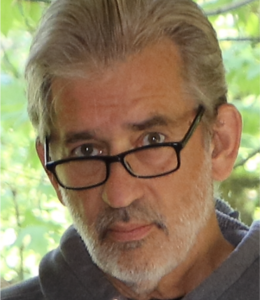 Owen Schmidt Owen Schmidt
Consultant
Owen L Schmidt LLC
Owen L. Schmidt, BA, MA, JD, has more than 32 years of service with the Federal Government. He served as Senior Counsel with the U.S. Department of Agriculture, Office of the General Counsel in Portland, Oregon, where he advised USDA agencies in Washington and Oregon. The author is a frequent author and lecturer on the National Environmental Policy Act. He has been the NEPA trainer for the Northwest Environmental Training Center for more than a decade.
|
Session 5.1 B
NEPA | EISs and EAs at the NRC: Meeting the FRA
12:00 – 12:30 PM
| About the Presentation |
|
The Fiscal Responsibility Act of 2023 (FRA) amended the National Environmental Policy Act of 1969 (NEPA) to call for Federal agencies to achieve several specific streamlining goals when preparing Environmental Impact Statements (EISs) and Environmental Assessments (EAs). Key among these goals are requirements to complete EISs within 2 years and EAs within 1 year, and keeping EISs to a maximum of 150 pages (300 pages for projects of extraordinary complexity) and EAs to a maximum of 75 pages. Many of the FRA objectives actually date in some form back as far as the Council on Environmental Quality (CEQ) regulations of 1978, and many are reflected in Title 41 of the Fixing America's Surface Transportation Act of 2015, the now revoked Executive Order 13807, the 2020 revisions to the CEQ Regulations, the 2022 "Phase 1" revisions to the CEQ Regulations, and the proposed "Phase 2" revisions. However, because the FRA amended the actual NEPA statute, it has elevated the importance and immediacy of these streamlining requirements. This presentation will describe a sequence of efforts by the Nuclear Regulatory Commission (NRC) since 2015 to adapt its environmental review and NEPA compliance processes to meet the requirements described above. Some of these efforts include developing environmental review guidance tailored to licensing small modular reactors and microreactors (small nuclear reactor projects), updating environmental regulatory guidance, meetings with stakeholders, and more. By responsively and aggressively developing these measures over time, the NRC found itself already on track to comply with the FRA as soon as it was enacted. The presentation will culminate with a discussion of the first EIS that NRC published after the FRA was enacted. The discussion will highlight specific ways in which this EIS complies with the FRA and embodies the objectives of the FRA. The discussion will examine quantitative trends comparing past NRC EISs with this latest EIS.
|
| About the Speaker |
|
 Peyton Doub, BS MS CEP PWS Peyton Doub, BS MS CEP PWS
Environmental Scientist
US Nuclear Regulatory Commission
Peyton Doub has over 35 years of experience as an environmental scientist, 15 with the NRC, and the rest as a consultant to other agencies and developers. He has performed wetland delineations, permitting and mitigation plans, ecological field studies, and contributed to numerous EISs and EAs. He is a frequent speaker at NAEP conferences and writer for NAEP publications.
|
Session 5.1 C
NEPA | Conveyance Complexities: An Unprecedented Compliance Journey of Minerals to Market
12:30 – 1:00 PM
| About the Presentation |
|
Public perception of land management practices within National Park lands rarely involves large-scale mining operations. In this case, the National Park Service (NPS) is charged with fulfilling commitments made by the U.S. Department of Interior (DOI) and Cook Inlet Region, Inc. (CIRI) an Alaska Native Corporation, organized under the laws of the State of Alaska, and pursuant to authority contained in the Alaska Native Claims Settlement Act of 1971 (ANCSA) and the Alaska Native Interest Lands Conservation Act of 1980 (ANILCA). Congress mandated the Secretary of the Interior to convey "mutually agreeable" easements for a transportation route and a port site in the 1976 Cook Inlet Land Exchange (ANCSA, as amended). The NPS will develop an Environmental Assessment for a proposal expected by spring 2024 from CIRI for a congressionally mandated transportation and port easement conveyance to access and develop their 10,000-acre inholding on the Cook Inlet side of the park. The current pre-proposal from CIRI includes a 12-mile transportation route with 1000-foot-wide easement and port location within park boundaries in a rugged, remote landscape.
An existing Process Agreement with the DOI Deputy Secretary's office and CIRI describes in summary:
- Very constrained timelines for the NEPA review on a complex and potentially litigious project
- Statutory exemption from preparing an Environmental Impact Statement
- CIRI and DOI would reach a "mutual agreement on the location of the easement and port location"
The NEPA process will include public involvement, scoping, tribal consultation and coordination, appropriate interagency consultation, issue identification and mitigation, development of purpose and need, alternatives, impact analysis, facilitation of IDT meetings, review and publication of EA, and facilitation of preferred alternative and Decision document. The project is high-priority for the Deputy Secretary's office as per the process agreement. While not court-ordered, the NPS must adhere to time constraints and other elements of the process agreement. The project is precedent-setting in the size and scale of such action within a National Park.
The project has high potential for litigation due to the nature of impacts within a National Park due to:
- The proposed use of the road and port for mineral exploration in an area with significant natural resources, commercial visitor use and fisheries
- The potential precedent set by conducting only an EA on such a complex project,
- The intersection with Tribal interests.
High-priority resource management and policy issues with a complex NEPA and decision-making process. The Johnson tract area and Tuxedni Bay are very high resource value areas for brown bears, a pictograph site, and an endangered beluga whale habitat. Given the Congressional mandate and the large number of tribes, commercial operators, and fishing interests involved this will be a complex public outreach effort associated with the EA. In addition, NPS will need to coordinate across many different disciplines including several outside of NPS expertise, such as road design and mitigation, port design and mitigation, and air quality monitoring for a Class 1 attainment area.
|
| About the Speakers |
|
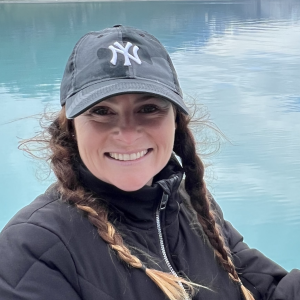 Leah Schofield Leah Schofield
Regional Environmental Coordinator, Alaska Region
National Park Service
Leah is a NEPA practitioner and technical expert with over 15 years of experience working for various federal land management agencies. In her current role she manages the NEPA Compliance Program for the Alaska Region. Leah graduated with a B.S. in Natural Resource Management from Oregon State University and worked as a Forester for the BLM and Hotshot Fire Fighter with the USFS in Oregon. Leah worked as a NEPA Coordinator with the USFS on the Flagstaff Ranger District on the Coconino National Forest in Arizona. She returned to Oregon and worked as the Lead Planning and Environmental Coordinator for the BLM in Medford, Oregon managing the NEPA program of work for all resource program areas. She worked heavily in timber sale litigation mostly on NEPA and ESA claims and was integral in her management of the Protest, Appeal and Litigation program. After working for two multiple use agencies, she sought a new adventure with the National Park Service. Leah is also on a permanent detail with the Bureau of Humanitarian Assistance (BHA) with the United States Agency for International Development (USAID). Leah has an 11 year old daughter, one Golden Retriever, two cats and a bunny. Leah loves cooking, fitness and sports, music, adventures, friends, family and parties!
|
|
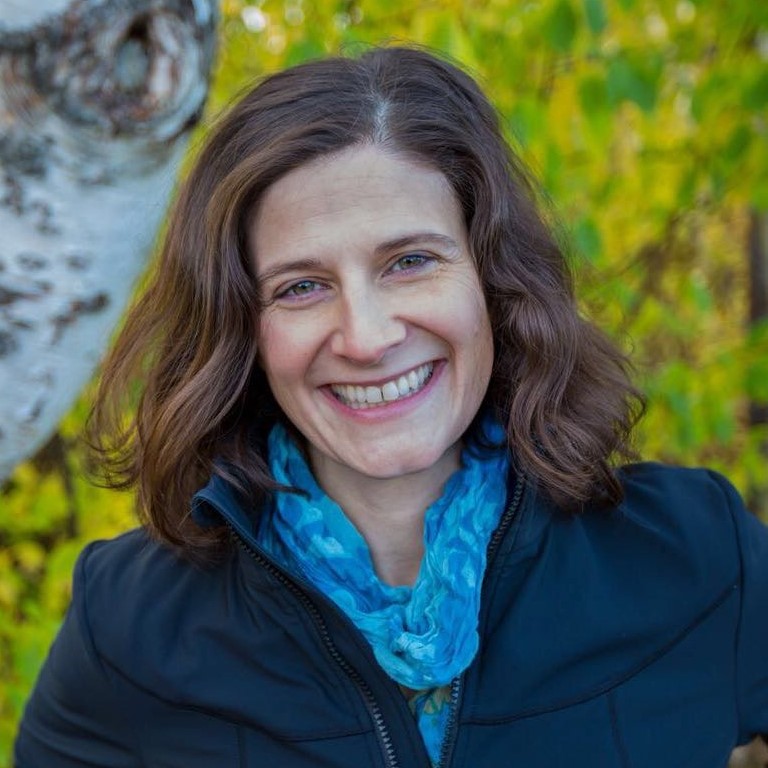 Elizabeth Bella, PhD Elizabeth Bella, PhD
Environmental Planning & Compliance (EPC) Team Lead
National Park Service
Elizabeth is a planner and vegetation ecologist with over 20 years of impact assessment, permitting, public involvement, and applied biology experience in Alaska. In her current role as Environmental Planning and Compliance Team Lead for the Alaska Region of the National Park Service, she leads her team in supporting planning and compliance projects for all Alaska region parks, as well as coordinating external compliance reviews. Prior to this role, she served as a senior environmental planner at AECOM, leading large-scale EIS analyses as well as various permitting and planning projects; she has also worked as an ecologist for the USFWS and the US Forest Service. She has a Ph.D. in Ecology from UC-Davis and completed a postdoc at the Bio-Protection Research Centre at Lincoln University, NZ.
|
Back to Top
Session 5.2 A
Geospatial | Mapping Invasive Species using Drones and Machine Learning
11:30 – 12:00 PM
| About the Presentation |
|
Collecting environmental data using traditional field methods can be challenging and time-consuming due to site size, safety hazards, and access limitations. Improvements in the affordability of drones and recent advances in drone-mounted sensors have made it possible to mitigate some of these challenges while offering additional data collection and analysis capabilities. In this presentation, we will provide a brief background on methods for collecting, processing, and analyzing digital data, focusing on multispectral data, before sharing a multiyear case study that applies these methods. We will also discuss how similar methods can be applied to other ecosystems or scaled to larger sites using satellite data. The case study highlighted in this presentation focuses on mapping invasive and native species at a mixed upland and wetland restoration site. In 2021, we collected 10-band multispectral data from the 100-acre site along with field samples of the different species present. We then developed a machine learning model trained on our field samples to classify each multispectral pixel into one of 14 classes. Our final machine-learning model was validated using a subset of our field data and achieved an overall species-level accuracy above 80%. We performed the same data collection and analysis at this site in 2023. By comparing our results from 2021 to 2023, we were able to identify changes over time and provide stakeholders with detailed, quantifiable information to help guide land management decisions in the future. We hope the information and examples shared in this presentation will provide attendees with ideas about how they can apply drones and machine learning to their environmental work.
|
| About the Speaker |
|
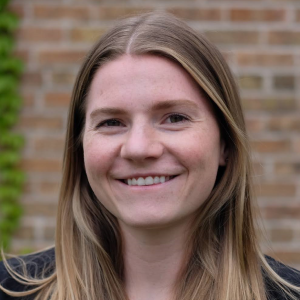 Amy Kopale Amy Kopale
GIS and Remote Sensing Specialist
CDM Smith
Amy is a GIS and remote sensing specialist at CDM Smith with experience in geospatial analysis and modeling. Her project work often involves leveraging open source and commercial data to better understand and solve human-environmental problems. She is experienced in remote sensing principles and applications, with expertise in leveraging optical remote sensing data and machine learning for environmental analysis.
|
Session 5.2 B
Geospatial | Watershed-based Spatial Feature Engineering for Predicting Streamflow
12:00 – 12:30 PM
| About the Presentation |
|
We describe a technique to predict streamflow observations using USGS stream gauge measurements, their watershed characteristics, and recent precipitation data. We first derive summary statistics at the watershed level for physical variables commonly used to predict streamflow. Environmental attributes such as slope, roughness, land cover, hydrologic group, field capacity, two weeks of previous precipitation, and even watershed compactness are generated for a single streamflow observation. This is done for over 250 unique watersheds and 770 different days between 2001 and 2022, creating a dataset of almost 30,000 streamflow measurements and their corresponding predictive variables. This work is done using open-source libraries in Python. We then load the dataset into an automated machine-learning pipeline running on the SAS Viya platform. This pipeline augments and screens variables in order to optimize their predictive utility, then runs multiple sets of statistical and machine learning models, including Linear and Logistic Regressions, Random Forests, Support Vector Machines, and Neural Networks, before choosing the combination of variables and models with the highest streamflow prediction accuracy. Once this model is generated, we can predict streamflow at any time or location with adequate data. Preliminary results appear promising, while also suggesting areas for improvement. Adding streamgages to the dataset will increase the generalizability of the results, while adding other predictive variables may increase model accuracy. More importantly, clustering watersheds at the beginning of the machine learning pipeline will enable different statistical models to be run on different clusters, allowing those models to better fit the data and thereby increase overall prediction accuracy.
Objective:
- Describe a data and model-driven approach for predicting environmental observations.
|
| About the Speaker |
|
 Philip Griffith Philip Griffith
Geospatial Consultant
SAS
Philip has over 6 years of experience managing, analyzing, and visualizing geospatial data for stakeholders within government agencies at the local, regional, and state levels. He holds an MS in Geographic Information Science from Florida State University and has worked at SAS as a geospatial consultant since 2020. As a GIS subject matter expert, Philip aids in all stages of projects incorporating spatial data with analytics, from building demos to solution implementation. He is an active participant in the local Tallahassee GIS community.
|
Session 5.2 C
Geospatial | Combining Remote Sensing and Machine Learning for Wetland Identification
12:30 – 1:00 PM
| About the Presentation |
|
Wetland ecosystems perform several vital functions. They are biodiversity hotspots and play an important role in improving water quality, storing flood waters, preventing erosion, and sequestering carbon. Assessing the extent of usable uplands on a site is vital to understanding the feasibility of building infrastructure. Federal and State regulations protect jurisdictional wetlands from development. These regulations require wetlands to be delineated in the field and identify potential impacts in order to be permitted. During the design process, these regulations require efforts to avoid and minimize impacts to wetlands. If impacts are unavoidable, then wetland mitigation credits (which often cost tens of thousands of dollars per acre) must be purchased. Therefore, estimating wetland extents is integral in determining site feasibility and the full cost to develop a site. Current methods to evaluate the extent and type of wetlands rely on extensive field efforts that are time intensive and often in hard-to-reach or dangerous locations or desktop analysis often based on outdated and low spatial resolution data, which can be a subjective and laborious process. Existing wetland machine learning models identify and map wetlands at regional scales, but their effectiveness might be less effective compared to traditional field methods. CDM Smith created a machine learning model to delineate wetland boundaries using high-resolution LiDAR and publicly available multispectral National Imagery Program (NAIP) data for projects across multiple geographies. CDM Smith utilized several approaches to train the model on site-specific data to save time while increasing accuracy and developed multiple model iterations with different sites and combinations of data. Combing high-resolution spatial datasets and leveraging machine learning allows for rapid wetland identification and quantification in a repeatable manner, which allows for the tracking of changes over time. Overall, the machine learning model accuracy was high, ranging from 70 to 90 percent. A machine learning model based on quality digital data provides a variety of benefits ranging from identification to assessment. The high volume of quality data can help reduce and eliminate the potential for areas of omission, help field staff avoid dangerous environments, and expedite project timelines. The digital data utilized for the wetland machine learning model can also be leveraged to aid in H&H design, mapping vegetative communities, and identifying sensitive habitats. This machine learning model can be applied to site-specific regions and ecosystem types and optimized using additional site-specific data. The model can then be reapplied over time and eliminates the subjectivity that can come from variable human-based assessments.
|
| About the Speaker |
|
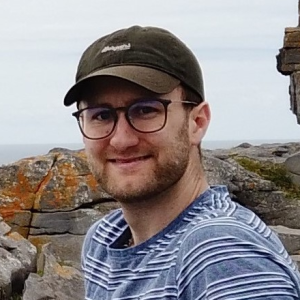 Andrew Reicks, GISP, CFM Andrew Reicks, GISP, CFM
GIS Specialist
Sky Wave at CDM Smith
Andrew has a bachelor's degree from The University of Iowa and a master's in GIS from the University of Minnesota. He is a certified GIS Professional and Certified Floodplain Manager. He has been working for CDM Smith for eight years in both Chicago and Kansas City. Andrew specializes in remote sensing and using Python for spatial data processing, analysis, and machine learning. He is the remote sensing lead for the Sky Wave service line at CDM Smith, which he helped establish. Andrew is also an FAA-licensed part 107 drone pilot.
|
Session 5.3 A
Cultural Resources | The Bethel Cemetery Relocation Project
11:30 – 12:00 PM
| About the Presentation |
|
Due to unavoidable infrastructure improvement and facility expansion, the Indianapolis Airport Authority contracted the cultural resource management specialists from Stantec to conduct public coordination, background research, field documentation, geophysical investigation, excavation, and ultimately relocation of individuals buried in the Bethel Cemetery. The cemetery was located in Decatur Township, Marion County, Indiana. This once-rural cemetery, likely established in 1827, was utilized by early Indiana settlers and their descendants until 1935. In sum 543 burials, only 135 of which were marked with extant headstones, were removed in collaboration with faculty and students from Indiana University Purdue University, University of Indianapolis, and Indiana State University. The Bethel Cemetery excavation required extensive coordination with several agencies. Both the Division of Historic Preservation and Archaeology (State Historic Preservation Office) and the Indiana Finance Authority - State Revolving Fund provided regulatory oversight. The scientific investigation was completed under Section 106 of the National Historic Preservation Act and the Indiana Code (IC 14-21-1), which allows for the archaeological relocation of human remains that predate January 1, 1940. The project resulted in extensive documentation and research while maintaining the utmost respect for the deceased. Extensive efforts that went beyond regulatory requirements were made to engage descendants, veteran groups, the preservation community, and other interested parties. Outreach culminated with a rededication ceremony at Concordia Cemetery, the new resting place of those interred in the Bethel Cemetery. Bethel Cemetery was reconstructed in a compressed space but remained respectful of family groupings. Detailed analysis resulted in the identification of several individuals in unmarked graves. When possible, burials with monuments that were damaged or displaced were re-associated with the proper grave. Graves of unidentified individuals were given markers with unique identifiers that correspond with the publicly available report so that in the future, family members and researchers will have access to the extensive information that was compiled for each burial.
|
| About the Speaker(s) |
|
 Ryan Peterson Ryan Peterson
Senior Principal, Archaeologist
Stantec
Speaker Bio coming soon.
|
Session 5.3 B
Cultural Resources | Agency Coordination Related to the DigIndy Deep Tunnel Project
12:00 – 12:30 PM
| About the Presentation |
|
The DigIndy Deep Tunnel project involves updating the combined sewer overflows within and beneath the City of Indianapolis, Indiana. The Tunnel system will encompass approximately 28 miles of 18-foot diameter concrete lined tunnels, constructed roughly 250 feet beneath the ground surface. In support of this project, Stantec completed archaeological investigations across Indianapolis over a period of five years. Forty discrete locations were investigated throughout downtown Indianapolis and the surrounding neighborhoods, the majority of which were situated within the National Register of Historic Places-listed Indianapolis Park and Boulevard System. The locations throughout Indianapolis were surveyed through archival research and ground-penetrating radar survey coupled with vacuum truck excavation, an innovative technique established by Stantec for urban archaeology as part of this project. When developing the appropriate field methodology with the vacuum truck, we worked closely with our client as well as the state and federal agencies involved in regulatory oversight of this project. Specifically, this includes the Indiana State Historic Preservation Office and the Environmental Review Coordinator within the Indiana Finance Authority office. The unique nature of the project and the open communication with government agencies allowed Stantec to develop a new and innovative method of conducting archaeological excavations in an urban setting. Our excavations utilizing the vacuum truck resulted in an increased accuracy of the excavation of subsurface features when compared to traditional archaeological methods. This approach enhanced our ability to identify intact archaeological deposits and aid in National Register eligibility assessment well in advance of construction. In addition, this new methodology significantly decreased the potential of accidental discoveries during construction.
|
| About the Speaker |
|
 Kathleen Settle, MA Kathleen Settle, MA
Archaeologist
Stantec Consulting Services Inc.
Ms. Kathleen Settle has served as an archaeologist for Stantec's Environmental Services Division since 2012. She is the manager for the archaeological field staff, is responsible for project management, serves as a Field Director and Principal Investigator, and ensures coordination between clients and government agencies while supporting Section 106 compliance projects. She has 13 years of experience in cultural resources management and holds a master's degree in Archaeology from Simon Fraser University.
|
Session 5.3 C
Misc | Physiological and Psychological Effects of Noise on People
12:30 – 1:00 PM
| About the Presentation |
|
Sound has affected people both physiologically and psychologically throughout history. It is mainly over the past century that the negative effects of sound have been studied and documented through credible research, resulting in the regulations and guidelines that we currently use in our profession for evaluating noise impacts. The plethora of misinformation about the effects of noise available to anyone who has internet access has resulted in many projects being delayed or canceled during the permitting process. It is therefore important to be able to separate credible from speculative data. This presentation summarizes the results of the latest credible research on the negative effects of sound on people while highlighting some of the most widespread speculative information being circulated. This information will provide realistic expectations for environmental professionals involved in noise evaluations, allowing them to address the issues in an effective and practical manner.
Objectives:
- Explain the latest credible research results regarding the negative effects of noise on people
- Explain the latest speculative research results regarding the negative effects of noise on people
- Put these results into perspective for environmental professions to more effectively address these issues as well as to provide supporting information for environmental professionals to use in written reports and discussions with the public
|
| About the Speaker |
|
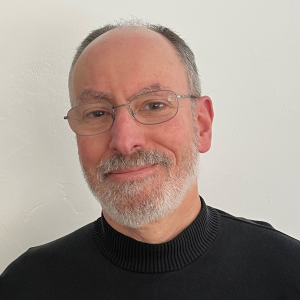 James Cowan James Cowan
Lead Acoustician
Dudek
James P. Cowan is the Lead Acoustician at Dudek. He is a board-certified noise control engineer (through the Institute of Noise Control Engineering) with more than 40 years of field experience, has taught university-level acoustics courses for 25 years, and is the author of Handbook of Environmental Acoustics (published by Wiley in 1994), Architectural Acoustics Design Guide (published by McGraw-Hill in 1999), and The Effects of Sound on People (published by Wiley in 2016). He has a masters degree in Acoustics from Pennsylvania State University.
|
Session 5.4 A
Environmental Justice | I-526 Lowcountry Corridor-WEST Environmental Justice Community Outreach and Mitigation
11:30 – 12:00 PM
| About the Presentation |
|
The I-526 Lowcountry Corridor (LCC) WEST project is a high-profile megaproject in the Lowcountry (Charleston) region of South Carolina. The proposed project includes over eleven miles of widening along I-526 and reconfiguration of the I-526/I-26 interchange. The project is set in a densely developed area of North Charleston and traverses low-income and minority neighborhoods surrounding the I-526/I-26 interchange. These Environmental Justice (EJ) neighborhoods were impacted by the original construction of I-26 and I-526 and would incur additional impacts from the current project. Without comprehensive mitigation, the project would result in disproportionately high and adverse impacts on low-income and minority populations. As such, the South Carolina Department of Transportation (SCDOT) and the Federal Highway Administration (FHWA) developed a $146M comprehensive mitigation plan that addresses direct, indirect, and cumulative impacts through the meaningful engagement of EJ neighborhood residents through a combination of "high touch" techniques including a Community Advisory Council (CAC) and Project Community Office as well as "low-touch" techniques that include pop-up events and drop-in community meetings. A large portion of project development took place during the COVID pandemic, necessitating virtual meetings and other actions to facilitate meaningful engagement during the COVID pandemic. In addition to developing an EJ Analysis and EJ Community Mitigation Plan, efforts also included a Social Needs Assessment, Community Impact Assessment, and Indirect and Cumulative Effects Assessment to support the National Environmental Policy Act (NEPA) environmental review process and preparation of an Environmental Impact Statement (EIS). SCDOT and FHWA have organized a Project Oversight Committee (POC) that includes CAC members and other community residents to help guide the implementation of the EJ Community Mitigation Plan. This presentation will include a status update on the POC and other engagement efforts post-NEPA.
The EJ outreach and mitigation developed for this project provides a framework that can be applied to other large-scale transportation projects in urban centers. A sizable amount of new federal funding is focused on improving infrastructure in vulnerable communities, and as such, it is imperative that practitioners overcome barriers to participation and engage residents in a meaningful way where community needs and priorities are valued and incorporated into project elements.
Session participants will:
- Gain an understanding of discussing the barriers to effective engagement of historically underserved populations and examples of effective outreach strategies to overcome engagement barriers
- Learn how to develop a community mitigation plan that reflects the social needs and priorities of affected communities while maintaining compliance with applicable federal regulations including Executive Order (EO) 12898: Federal Actions to Address Environmental Justice in Minority Populations and Low-Income Populations, new EOs on EJ, and NEPA.
|
| About the Speaker |
|
 Amy Sackaroff, AICP Amy Sackaroff, AICP
Principal, Senior Planner
Stantec
Amy has 23 years of experience as a NEPA practitioner and Environmental Justice/Equity Specialist. She has managed the development of dozens of socioeconomic studies including Environmental Justice analyses, community impact assessments, indirect/cumulative effects assessments, and transportation equity evaluations. She has also led the development of Environmental Impact Statements, Environmental Assessments, Categorical Exclusions, and other NEPA environmental documents. Amy's broader experience includes program development, training, and federal grant preparation. She also regularly facilitates interagency coordination, community engagement, stakeholder meetings, and other public outreach efforts.
|
Session 5.4 B
Environmental Justice | Addressing Environmental Justice Considerations for the I-81 Viaduct Project
12:00 – 12:30 PM
| About the Presentation |
|
Syracuse in Central New York is a center for education and healthcare. Interstate 81 runs through the center of the city on a viaduct and, like other 1960's era highways, separates residential areas of the city from its major employment centers and has hindered connectivity among neighborhoods. The original construction of I-81 bisected the city and segregated poorer, minority communities from key destinations within the city. Over time, the isolation of these poorer, minority communities further degraded the socioeconomic status of their residents and the livability of their neighborhoods. Guided by the results of a corridor study prepared as a collaboration of the New York State Department of Transportation and the Syracuse Metropolitan Transportation Council, the city's metropolitan planning organization, NYSDOT, and the Federal Highway Administration issued a Notice of Intent to prepare the I-81 Viaduct Project Environmental Impact Statement in 2013. Over the next several years, FHWA and NYSDOT studied alternatives to retain an interstate route along the current alignment of I-81 through Downtown Syracuse (i.e., viaduct alternatives) and alternatives to reroute interstate traffic through the eastern suburbs of Syracuse along existing I-481 and abandon the interstate route through the city, which was known as the Community Grid Alternatives. Ultimately, FHWA and NYSDOT selected the Community Grid Alternative for the project and construction has begun. The consideration and engagement of environmental justice populations was integral to the study of the future of I-81 in Syracuse. From early planning through the EIS phase, NYSDOT and its team have sought the participation of and input from environmental justice populations. This seminar will provide an overview of the project and its NEPA process. It will then focus on efforts to engage with environmental justice populations and address the concerns they raised throughout the process. The I-81 project demonstrates the importance of environmental justice perspectives in project development and the need to look beyond the direct project effects in the development of infrastructure projects.
Objectives:
- Inform the audience of major transportation initiatives in Central New York
- Identify the application of environmental justice principles throughout project development
- Describe the public engagement approach, including unique events and approaches to reach environmental justice populations
- Describe measures to address environmental justice concerns during the construction of the project
- Discuss the involvement of environmental justice stakeholder groups in FHWA's decision-making process
|
| About the Speakers |
|
 Christopher M. Calvert, AICP Christopher M. Calvert, AICP
Senior Vice President
AKRF, Inc.
Chris has been a transportation planner in New York City since 1997 and has worked at AKRF, Inc. for 24 years. He is a partner in the firm and co-leads its Municipal, Planning and Transportation and GIS, Graphics, and Publications Groups. Chris also manages environmental reviews of transportation projects for agency clients. His current work includes the Brooklyn Queens Expressway Atlantic Avenue to Sands Street Project (Brooklyn, NY), the I-81 Viaduct Project (Syracuse, NY), and the Niagara Scenic Parkway Trail (Lewiston, NY). Chris graduated with a Master of City Planning degree from the Georgia Institute of Technology and a Bachelor of Arts degree from DePaul University. He resides in Jackson Heights, Queens with his husband Andrew.
|
|
 Rita Campon Rita Campon
Rita Campon has extensive experience in the management and preparation of National Environmental Policy Act documents for transportation projects. She has performed various roles in numerous large, complex environmental and transportation projects while working for Parsons during the last 25 years. Current assignments include the I-81 Viaduct Project (Syracuse, NY), the Re-imagine I-787 Project (Albany, NY), and the Cross Bronx Project (Bronx, NY). She has managed multifaceted public participation and agency coordination programs for several EIS’s, including the I-81 Viaduct Project, the Tappan Zee Bridge EIS, and the Route 9A Project. Rita lives in the West Village neighborhood of Manhattan.
|
Session 5.4 C
Environmental Justice | Participant Compensation: Emerging Practice for Meaningful and Equitable Public Involvement
12:30 – 1:00 PM
| About the Presentation |
|
Public involvement is core to the environmental process and industry standards for how to engage communities meaningfully and equitably on infrastructure projects continue to evolve. More and more agencies are exploring participant compensation as part of public engagement processes to demonstrate the value of lived experience in infrastructure projects and acknowledge the level of effort we ask of communities to participate in our processes. This is especially true for EJ and other underrepresented communities. Within the Transportation industry, new updates to USDOT's guide for practitioners "Promising Practices for Meaningful Public Investment in Transportation Decision-Making" clarify that federal funds can be used for participant compensation activities such as hiring community-based organizations, providing food at public meetings, providing childcare at public meetings, and/or providing financial incentives or reimbursements for participation. Additionally, a few states have recently adopted laws or policies that require or allow for compensating participants or community organizations directly and/or indirectly. However, despite this new guidance, participant compensation is still an emerging practice within public involvement and there are no clear best practices to guide agencies in their implementation. Practitioners looking to do this have several questions, such as when should participant compensation be used? How should participants be compensated? How much? And to whom?
In this session, we will explore the emerging practice of participant compensation in public engagement processes, including discussing questions previously noted. Since this is a very emerging topic, this session will be a space for discussion among practitioners to learn from one another rather than a presentation. We will host a panel discussion with an emphasis on Q&A: panelists asking questions of one another and asking/answering questions from the audience. The panel will include representatives from Transportation agencies at the forefront of exploring participant compensation in public involvement processes: USDOT, Minnesota DOT, Washington State DOT, and HDR. Different agencies are taking different approaches to answering these questions. For example, the Minnesota Department of Transportation piloted participation on a few recent projects. They tested different types of participant compensation including direct payment to participants, providing meals at meetings, incentives for participation in market research, and paid partnerships with community organizations. Often, on project included multiple. Based on the results of these pilot projects, MnDOT is in the process of developing an internal policy to guide future agency implementations of participant compensation. Washington State recently passed a law allowing compensation for lived experience on boards, commissions, councils, committees, and other similar groups in recognition that equitable public policy discussions should include individuals directly impacted by the policy. WSDOT is exploring what this law means for their engagement and structing discussions among practitioners to encourage meaningful engagement.
Objectives:
- Understand the potential benefits of participant compensation in public involvement
- Understand the current state of practice surrounding participant compensation in public involvement
- Learn how to identify emerging best practices in participant compensation
|
| About the Moderator |
|
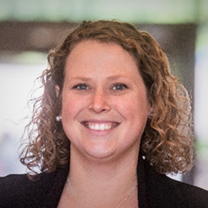 Katie Caskey, AICP Katie Caskey, AICP
Senior Communications and Engagement Consultant
HDR, Inc.
Katie Caskey (she/her) has over a decade of experience in the infrastructure industry, specializing in public engagement, strategic communications, and policy planning. She works as part of HDR’s full-service creative and community engagement practice who focus on connecting people to the projects and services that move communities forward. Katie previously was the Policy Planning Director at the Minnesota Department of Transportation and has robust knowledge of transportation issues and trends. She also previously served as an adjunct faculty member at the Humphrey School of Public Affairs focused on educating future planning and policy professionals on how to conduct meaningful and effective public engagement and communications.
|
| About the Speakers |
|
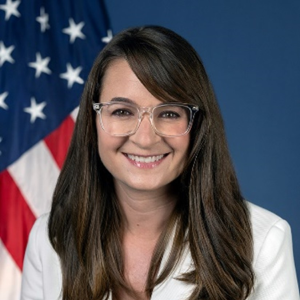 Kristin White Kristin White
Chief Counsel
FHWA
Kristin White (she/her) was named Chief Counsel of the Federal Highway Administration (FHWA) at the U.S. Department of Transportation (USDOT) in July 2023. In this role, Ms. White oversees all aspects of FHWA’s legislative, regulatory, and other programs to advise the federal-aid highway program and the secretary on matters relating to the 2,700-person agency and $59 billion Federal-aid highway program. Ms. White serves as part of the FHWA senior leadership team and manages 60 professionals in four offices across the country to advance the FHWA mission to deliver a world-class system that advances safe, efficient, equitable, and sustainable mobility voices for all while strengthening the Nation’s economy.
|
|
 Hally Turner, AICP Hally Turner, AICP
Policy Planning Director
Minnesota DOT
Hally Turner (she/her), AICP, is Policy Planning Director at the Minnesota Department of Transportation (MnDOT). She combines a background in public health and nearly 10 years of experience in transportation to ensure our built environment serves our needs now and into the future.
|
|
 Jesseca Brand, MPA Jesseca Brand, MPA
Community Engagement Program Manager
Washington State DOT
Jesseca Brand is the Community Engagement Program Manager for Washington State DOT. She is a community engagement professional with 20+ years of experience creating engagement strategies that focus on solutions, with not for, communities that are most impacted. She has served as a strategic advisor to governmental leadership at the City of Seattle and a partner to Overburdened Communities as they navigate politically challenging "once in a generation" policy and project implementation. Jesseca attended Seattle University for both her undergraduate and graduate degrees. She is a native Washingtonian and lives in Seattle with her husband, two children, and dog. In her free time, she is a tour guide for a donut walking tour, sharing 4 of Seattle's best donuts with a side of Seattle history.
|
Back to Top
Back to Schedule
|